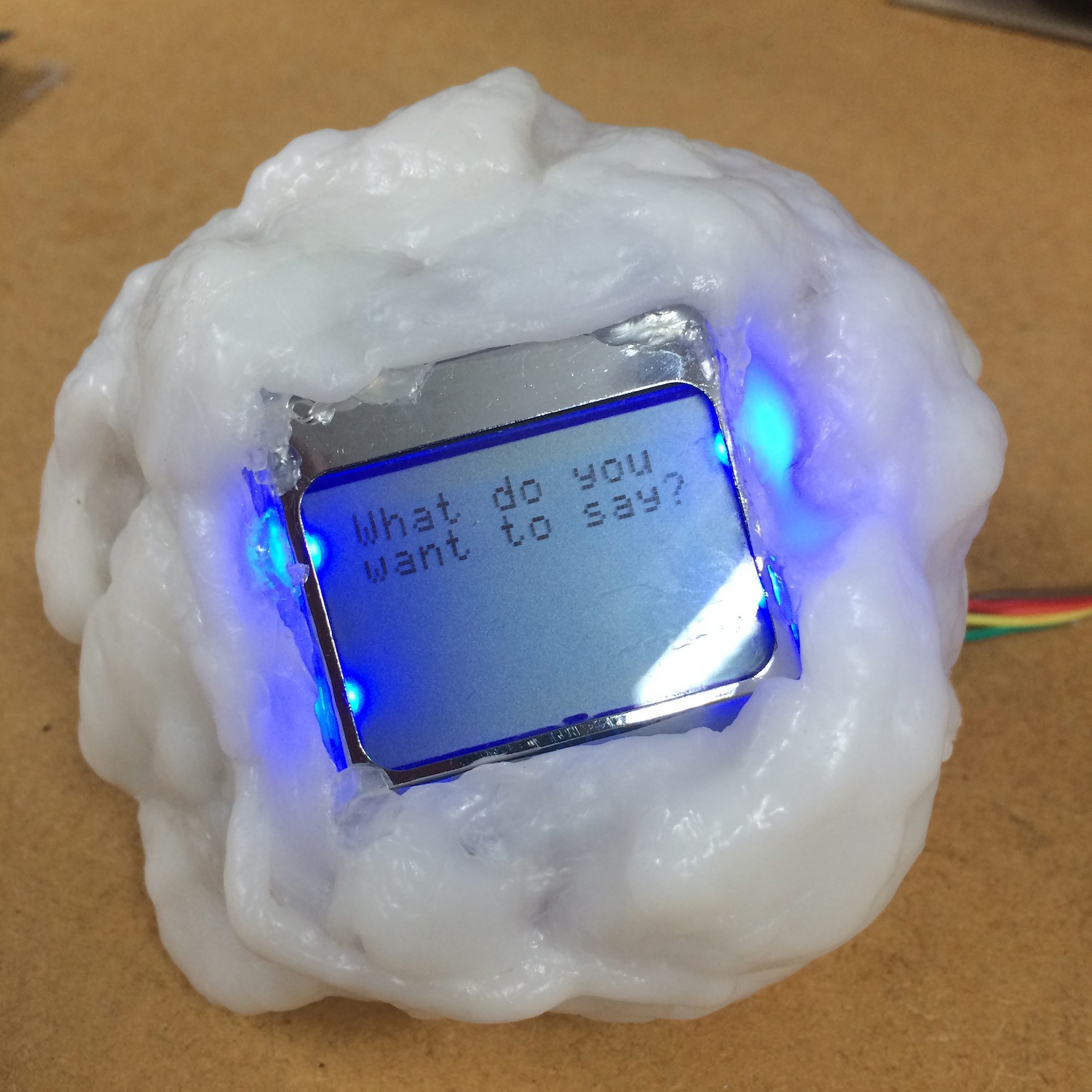Feral screens
Issue: XXIV.1 January - February 2017Page: 14
Digital Citation
Authors:
Cally Gatehouse
Describe what you made. Feral Screens is an ongoing research through design project that seeks to critically examine urban digital screens and to explore alternative ways of using digital technology to mediate public life. A feral animal is a domesticated species that lives in the wild, often on the margins of human populations. This metaphor of "going feral" is used as a way to open up an alternative design space to the typical corporate or civic narratives and aesthetics around digital technologies in public spaces.
 |
The underpass was the inspiration for the first screen. |
Briefly describe the process of how this was made. The design process for a screen is partially improvised each time but generally I start from a public space or behavior. From that initial inspiration, I make a feral screen typically in the form of a small display controlled by an Arduino in some kind of handmade case. I draw upon my own experiences to inform the work in dialogue with the material and social context of the city where I live. Once I have made a screen, I take it into public space and photograph it in situ. Using the screen, the documentation, and subsequent self-reflection as a prompt, I begin to imagine a social world that could evolve around the feral screen through creative and reflective writing.
 |
Making the screen for the underpass. |
The design was uncomfortably reminiscent of the cardboard the sleeper was using to insulate himself from the wind and the cold.
What expertise (skills and competences) did it require? The technical makeup of the screens is very simple; they are primarily visual rather than interactive or functional objects so more often than not it is a simple matter of hooking up components and editing sample code. Initially, I intended to add interactive elements at a later date, but I found that suggesting the possibility of interaction shifted conversations from "how does it work?" toward "how might it work?" which suited my research focus.
 |
Trying out the display for a screen inspired by a cheap cider bottle and drinking in public. I quickly realized I needed a smaller Arduino board. |
What materials and tools did you use? I mainly use ordinary materials and techniques from maker and DIY practices rather than professional materials and processes. I've found they should be beautifully crafted in some sense; their feral qualities demand that they need to be almost naively made. I've abandoned a few prototypes when they've started to feel too "designed."
 |
Trying out locations for the blue screen. I began to notice defensive architecture and prohibitive signs aimed at stopping public drinking. |
What was the biggest surprise in making this? Because my life and experiences feed into the feral screens, new meanings evolve over time through my continued interaction with those public spaces. This has really enriched and informed the research process, even if it hasn't always been comfortable. One screen was inspired by an underpass that made me feel unsafe. It is made from cardboard and resembles a bird box, a slightly arbitrary, very twee, design choice that then took on new meaning shortly after I photographed the screen: It became apparent that someone was sleeping rough in the underpass. This put the discomfort I felt into perspective; the design was also now uncomfortably reminiscent of the cardboard the sleeper was using to insulate himself from the wind and the cold. I probably wouldn't have made that connection if it wasn't somewhere I passed through every day.
 |
Finished screen in the underpass. Text scrolls across the screen that reads "sometimes I don't feel very safe here." |
 |
Finished screen on a park bench. The text is an account of drinking cider with letters switched around so that it appears to be drunk. |
Cally Gatehouse, Northumbria University, [email protected]
Copyright held by author
The Digital Library is published by the Association for Computing Machinery. Copyright © 2017 ACM, Inc.


